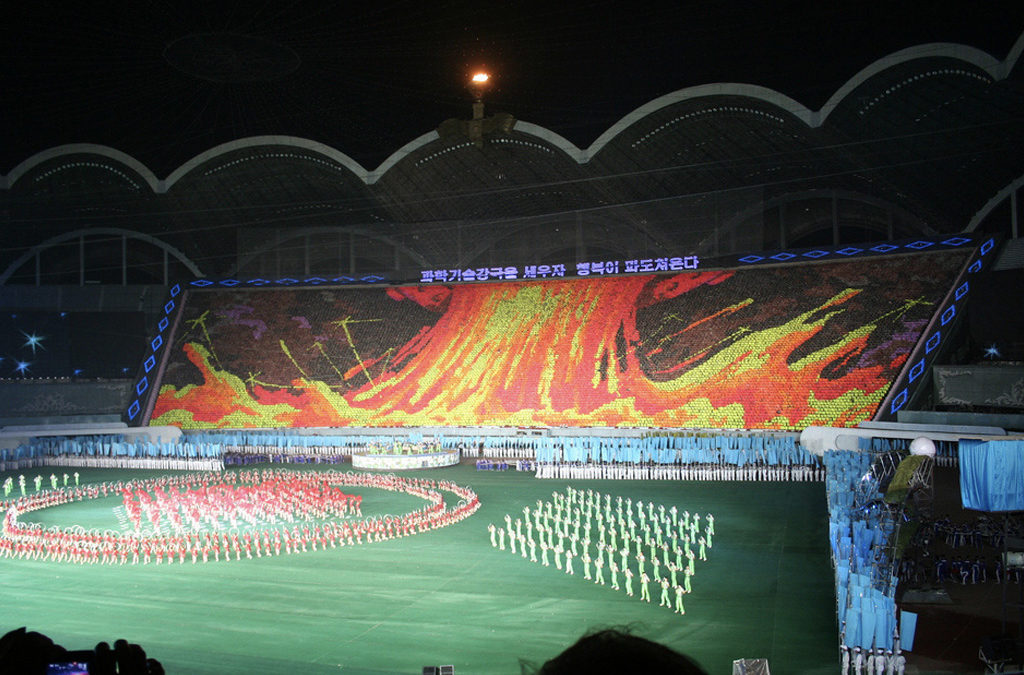David Cortright and Linda Gerber-Stellingwerf
The history of nonproliferation teaches that nations must be persuaded rather than forced to give up nuclear weapons capability. This is a difficult challenge with a regime as truculent as North Korea, where the primary U.S. policy is one of isolation and sanctions. The success of sanctions depends not on their severity but on how they are mixed with incentives as part of a diplomatic strategy.
Over the decades more than two dozen countries have decided not to acquire or maintain weapons of mass destruction. Security assurances and positive inducements played an important role in most of these nonproliferation decisions.
In all cases except Iraq, nations decided independently to give up the bomb. They did so for a variety of reasons—a domestic shift toward democracy, the lure of greater openness to the global economy, improved relations with neighboring states, and security assurances from the United States and other major states.[i] In many cases, economic and security inducements helped to make denuclearization the preferred option.
The offer to lift sanctions can be a potent inducement for cooperation. In the case of Libya in 2003, the U.S. pledge to lift sanctions formed a central part of Tripoli’s agreement to abandon weapons of mass destruction.
EASING INSECURITY
The art of diplomacy lies in creatively blending pressures and inducements to exert persuasive influence and reward a state for adopting a desired change in policy. As nonproliferation expert Leon Sigal observes, convincing countries to abandon the bomb requires cooperating with them, however unsavory that may be. “Countries that seek nuclear arms are insecure,” he writes. “Trying to isolate them or force them to forgo nuclear arming could well backfire.”
Such states need assurances to ease their insecurity, Sigal says. The best approach, according to Sigal, is a “strategy of diplomatic give-and-take that combines reassurance with conditional reciprocity, promising inducements on the condition that potential proliferators accept nuclear restraints.”[ii]
In 2005, North Korea pledged to abandon its nuclear program, and the U.S. stated that it had no intention of attacking North Korea with nuclear or conventional weapons.
On several occasions over the past two decades, North Korean officials have stated explicitly their willingness to abandon weapons programs in return for U.S. security assurances and guarantees of normalized relations. In September 2005, the parties to 6-party negotiations signed a “Statement of Principles” in which North Korea pledged to abandon its nuclear program and return to the Nuclear Nonproliferation Treaty. The United States simultaneously stated that it has no intention of attacking North Korea with nuclear or conventional weapons.
Eighteen months later, the parties reached agreement on steps to implement the Statement of Principles. The North began to disable some of its nuclear facilities and staged for the media an explosion at the Yongbyon nuclear site that destroyed a 60-foot cooling tower. The United States began to take action to lift some sanctions and remove North Korea from the list of states sponsoring terrorism. But implementation of these actions faltered as the Bush administration left office, and the North sank a South Korean ship and bombed a nearby island in 2009 and 2010.
THE DIPLOMATIC DANCE
In late February of this year, Pyongyang renewed the diplomatic dance by offering to freeze nuclear weapons tests, ballistic missile launches, and uranium enrichment in exchange for pledges of food aid, security assurances, and improved bilateral relations from Washington. Shortly afterwards, however, North Korea announced plans to conduct a ‘satellite launch’ — an act that violates Security Council Resolution 1874 and the spirit of the proposed agreement. It brought swift condemnation as a ‘fresh provocation’ from South Korea and Japan and even criticism from China.
North Korea’s announcement of a nuclear ‘satellite launch’ brought swift condemnation from South Korea and Japan and even criticism from China.
It is doubtful that the February agreement will be implemented until the satellite launch issue is resolved. Even if the launch proceeds, scuttling the February deal, this does not mean the United States should abandon efforts at diplomatic dialogue. The goal should be to probe for opportunities to establish a pattern of positive reciprocity with the North.
The United States could take action to suspend some of its sanctions or postpone military exercises in the region and wait for the other side to respond. If the North acts provocatively or attempts to take advantage of the gesture, Washington could withdraw the action and return to the status quo ante. If Pyongyang responds positively, however, Washington could take additional steps to induce further concessions, with the ultimate goal of reducing military tensions in the region and normalizing diplomatic and economic relations.
David Cortright is director of policy studies at the Kroc Institute for International Peace Studies and the editor of Peace Policy. Linda Gerber-Stellingwerf is the chief operating officer of the Fourth Freedom Forum.



